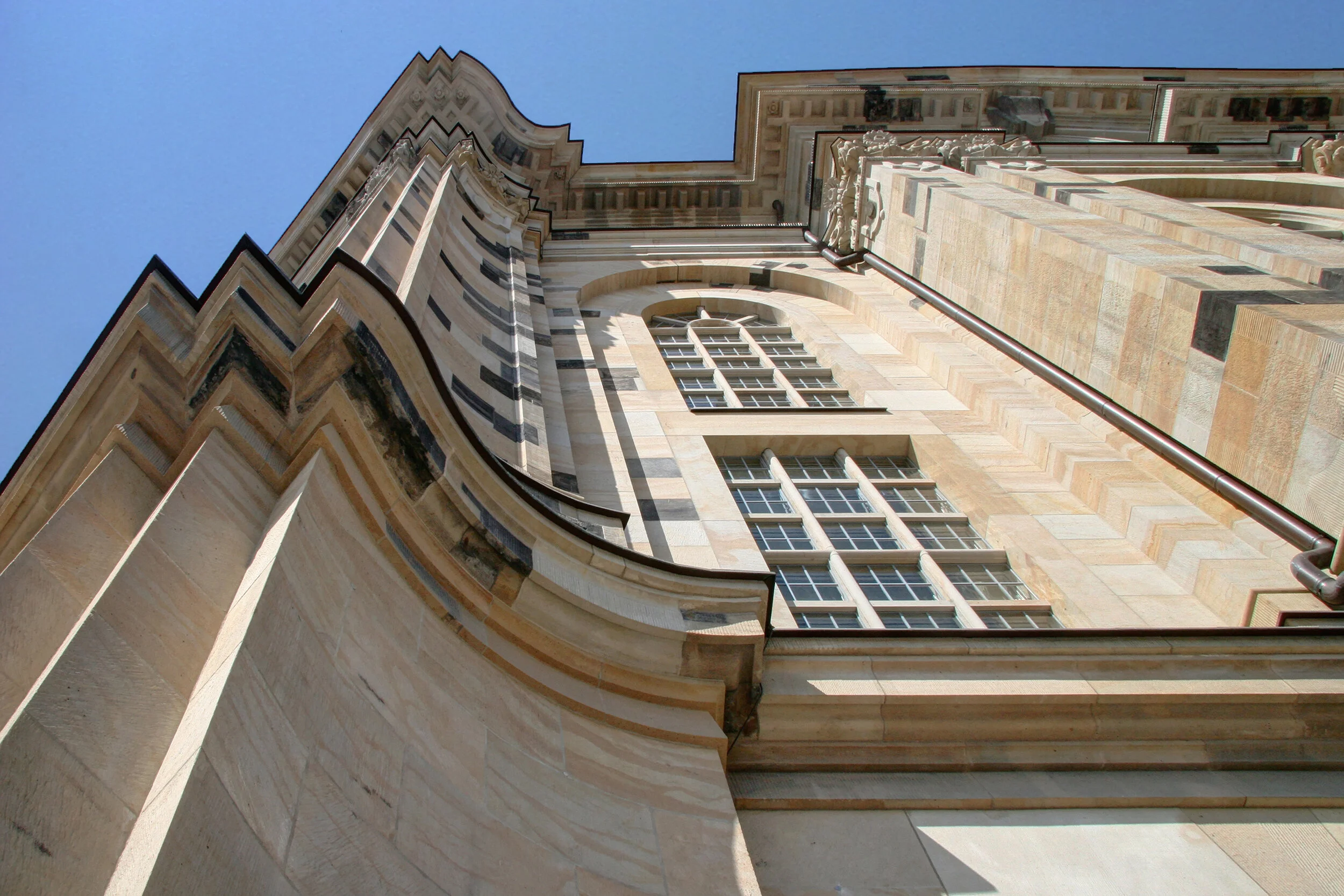
Page 10 of 12
Dresden, Germany
After the show you can not sing wherever you are, but for now let's all pretend that we're gonna get bombed
If you've ever read the still wonderful "Slaughterhouse Five" by Kurt Vonnegut (or ever even watched the History Channel), then you should know all about Dresden. Certainly not the moral highlight of the Allied forces' campaign, Dresden was obliterated late in World War 2 for no real, justifiable strategic reason, although revenge against the Nazis is often mentioned as a possible contributing factor. The result was scary and horrendous, ninety percent of the old city was crushed in a carpet bombing attack that supposedly used more firepower than the one nuclear bomb dropped on Hiroshima later that same year.
The center of the city (both physically and symbolically) was the totally destroyed Frauenkirche. The greatest of the Protestant churches was left as an especially unpleasant ruin for over fifty years by the East Germans and referred to as a "peace memorial," I guess that sounded better than a giant ruin that an atheist state just wasn't that interested in resurrecting. Since reunification in 1989, changing attitudes and an influx of money and support helped to start a rebuilding process that ended late last year just in time for the city's 800th birthday. It's enough to make even Martin Luther himself (pictured below) smile, that is of course if Martin Luther ever actually smiled to begin with. The jury's still out on that one.
Anyway the rebuilt cathedral used a few of the original stones that they could still salvage (the dark ones) and a hell of a lot of new ones to fill in the gaps.
If there was a dome to climb you can bet I climbed it, just as if there was a group of strangers inadvertently posing to help frame a foreground image you can bet I photographed them.
This is at the very top of the dome, with views away from the Elbe and on towards the old market, the Pragerstrasse, the railway station and right into Saxony.
A quick view of the vertical interior, complete with all of the historically accurate sprinklers, exit signs and recessed downlights I'm certain you would have seen in the original 18th Century cathedral.
Still under reconstruction but almost finished (a fair criticism of large sections of the old city), this is the Academy of Arts as seen from the Brühl Terrace, the self proclaimed "Balcony of Europe" promenade that follows the Elbe and looks across at the (ironically) now older, un-bombed new city.
All good things (even the Balcony of Europe) must come to an end. And so it goes. As the balcony fades into a generous stair, the Dresden Cathedral and Semper Opera House (on the back right) lead toward the Zwinger Royal Palace. A good part of the city is starting to feel like what I imagine its old, Baroque self felt like before it was crushed and then reborn.
A side note, I had browsed through my copy of "Slaughterhouse Five" to look for a quote about what Dresden was like in the days immediately after the bombing, but decided against it for various good reasons. Such decisions should not discourage you from reading it if you have yet to do so- it remains a powerful book that has little to do with slaughterhouses but everything to do with forced human breeding in space alien zoos, Dresden and the benefits of being unstuck in time. Still highly recommended reading, if you have the time.
As promised, a last Coop Himmelblau building to end yet another set of pictures. This is the UFA Palast, a movie theatre complex right off the Pragerstrasse (the main Communist era pedestrian street that connected the railway station to what's left of the Altstadt). For reasons I do not totally understand it was closed during my visit, meaning that like you I can only imagine what it's like inside. And I can only imagine the awesomeness of “Das Omen" or “Ab durch die Hecke" or "Fluch der Karibik 2" or any of the other fine films that German cinema has to offer.
While the atheist East German government thought it was a good idea to leave the Frauenkirche in ruins, it had no problem rebuilding the Semper Opera House, although it wasn't in that much of a hurry to do so. The opera house reopened in 1985, only forty short years after the bombing.
The Zwinger is a tourable royal palace in Dresden that contains museums and exhibits that was closed when I was there, a real danger and problem of traveling on a Monday. Still at least the grounds were open, or at least partially open. This is inside one of the palace courtyards at a somewhat overdone fountain, one that was admittedly nicer in person than it is in the pictures. I was quite happy to have it to myself, wandered throughout it and took some pictures, only to find out as I was leaving that it was actually closed as well, something that was much more obvious as I exited than it was when I entered.

